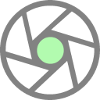Creating a Slideshow Screen
Updated October 2023
RightBooth provides some powerful features to allow you to present slideshows of videos, photos and text messages. A slideshow can also be set to be shown while the system is not being used. Here we explain how to do this.
During the event, videos are being recorded, photos taken and text messages entered into the system. All these files are stored on the computer and can be re-shown using the RightBooth sequence items that can be added to any event screen.
First, create a new screen to hold your slideshow... In the Screen Designer, click the Add items checkbox (on the Main Toolbox) to show the 'Add items' panel. Then click the Screen button to add a new screen to the event, naming it Slideshow in the process.
The new screen will be added as the first screen in the event and it will be initially empty.
Now let's assume we want to show a slideshow of all the photos that are being taken during the event. To do this:
You also need to make sure that users can progress from the slideshow screen to the event's Start screen. To do this, click on the screen and then click the 'Properties' check box to show the properties for the Slideshow screen. Then click the 'Advance' checkbox to allow user interaction on the screen.
Now each time you play the event file, the first screen will show a slideshow of previously taken event photos.
And every time the system has been used, the Slideshow screen will be shown again and photos will be displayed randomly in the sequence.
Also, if the system ever times out, it will return to showing the Slideshow screen.
During the event, videos are being recorded, photos taken and text messages entered into the system. All these files are stored on the computer and can be re-shown using the RightBooth sequence items that can be added to any event screen.
First, create a new screen to hold your slideshow... In the Screen Designer, click the Add items checkbox (on the Main Toolbox) to show the 'Add items' panel. Then click the Screen button to add a new screen to the event, naming it Slideshow in the process.
The new screen will be added as the first screen in the event and it will be initially empty.
Now let's assume we want to show a slideshow of all the photos that are being taken during the event. To do this:
- Add an Image sequence item to the slideshow screen
- Double click the mouse on the new item to add content into it
- On the 'Image sequence files' panel, tick the option 'Show photos from the event'
- Tick the option 'Random order'
You also need to make sure that users can progress from the slideshow screen to the event's Start screen. To do this, click on the screen and then click the 'Properties' check box to show the properties for the Slideshow screen. Then click the 'Advance' checkbox to allow user interaction on the screen.
Now each time you play the event file, the first screen will show a slideshow of previously taken event photos.
And every time the system has been used, the Slideshow screen will be shown again and photos will be displayed randomly in the sequence.
Also, if the system ever times out, it will return to showing the Slideshow screen.
Altering the Slideshow Transition Style
You can alter the way the slideshow displays photos by clicking on the Slideshow item, then showing its properties. You can now choose an 'Animate' style which defines the transition effect between the photos. You can also set the animation speed and the amount of time each photo will be displayed.
Note that the 'Clip' property also plays an important part in the transition effect with certain animations. For example, if you choose the Animation property 'Land', and turn off the 'Clip' property, you will see the animation starting from well outside the extents of the sequence item boundary.
Again, the 'In' and 'Out' values affect certain transitions, by altering the size of the photos as the transition occurs. As do the Fade in and Fade Out properties.
All these option combine to provide literally hundreds of transition effects so we suggest you spend some time experimenting with all these settings in order to obtain your desired photo transition effect.
It is also possible to add Video Sequence and Label Sequence items in the same way as described above in order to show a slideshow of previously recorded videos and text messages, so the choice is yours.
Note that the 'Clip' property also plays an important part in the transition effect with certain animations. For example, if you choose the Animation property 'Land', and turn off the 'Clip' property, you will see the animation starting from well outside the extents of the sequence item boundary.
Again, the 'In' and 'Out' values affect certain transitions, by altering the size of the photos as the transition occurs. As do the Fade in and Fade Out properties.
All these option combine to provide literally hundreds of transition effects so we suggest you spend some time experimenting with all these settings in order to obtain your desired photo transition effect.
It is also possible to add Video Sequence and Label Sequence items in the same way as described above in order to show a slideshow of previously recorded videos and text messages, so the choice is yours.
Showing the Slideshow on a Second Monitor
By enabling the second monitor features in RightBooth, you can then choose to add a Slideshow item to one of the second monitor screens using the method described above. By doing this you will find that your event photos will be displayed in a permanently displayed slideshow on the second monitor while users record videos and take photos on the main monitor.

